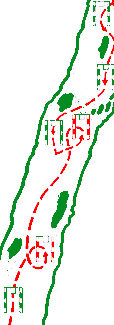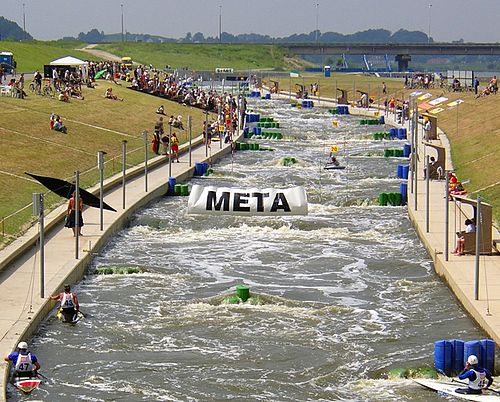History
Whitewater slalom, which was originally modelled on ski slalom, began in Switzerland in 1932. Slalom canoeing had begun on flat water, but soon switched to white water rapids on natural rivers. World War Two set back development, especially from an Olympic point of view, but today both sprint and slalom are established Olympic disciplines.
The sight of skill, strength and courage pitted against powerful water makes slalom an exciting spectator sport both live and on TV. For the competitor there is the challenge, together with fantastic friendships, cooperation between national teams, and a closeness to the river and the environment.
The first Slalom World Championships were held in 1949 in Geneva. Since then there have been dramatic changes - as folding and rigid canvas canoes have been replaced by composites and rules have been changed and simplified.
In 1992 canoe slalom returned to the Olympic Games, in the fantastic atmosphere under the burning sun of La Seu d´Urgell. There has been a massive increase in interest outside slalom's traditional areas, and slalom is going into the new millennium as a permanent Olympic sport.

What is canoe slalom?
Canoe slalom is one of the most spectacular watersports, demanding skill, stamina and courage. The aim is to run a rapid river course marked by "gates" fast, and without touching.
A "gate" is two poles, suspended over the water. Green and white gates are negotiated in a downstream direction, red and white gates upstream. The gates are placed so that you must make tricky cross-current moves and use the eddies and waves.
A touch is penalised with 2 seconds added to the competitor's time. Missing a gate costs 50 seconds - a wipeout in serious competition. Each competitor takes two runs, and the best run of the two counts.
Five classes compete: Men's and Ladies' Kayak (K1 and K1W), Canadian Singles( C1M and C1W) and Canadian Doubles(C2).
If you touch a pole with anything - paddle, boat, buoyancy aid, helmet or any part of your body - a 2 second penalty is added to your time. If you miss a gate out, or go through in the wrong direction or upside down, the penalty is 50 seconds! The aim is fast and clean.

Canoe Slalom NZ
Vector Wero Waterpark
Great South Road, Manukau
PO Box 16-292
Bethlehem, Tauranga
New Zealand
 Admin Login
Admin Login